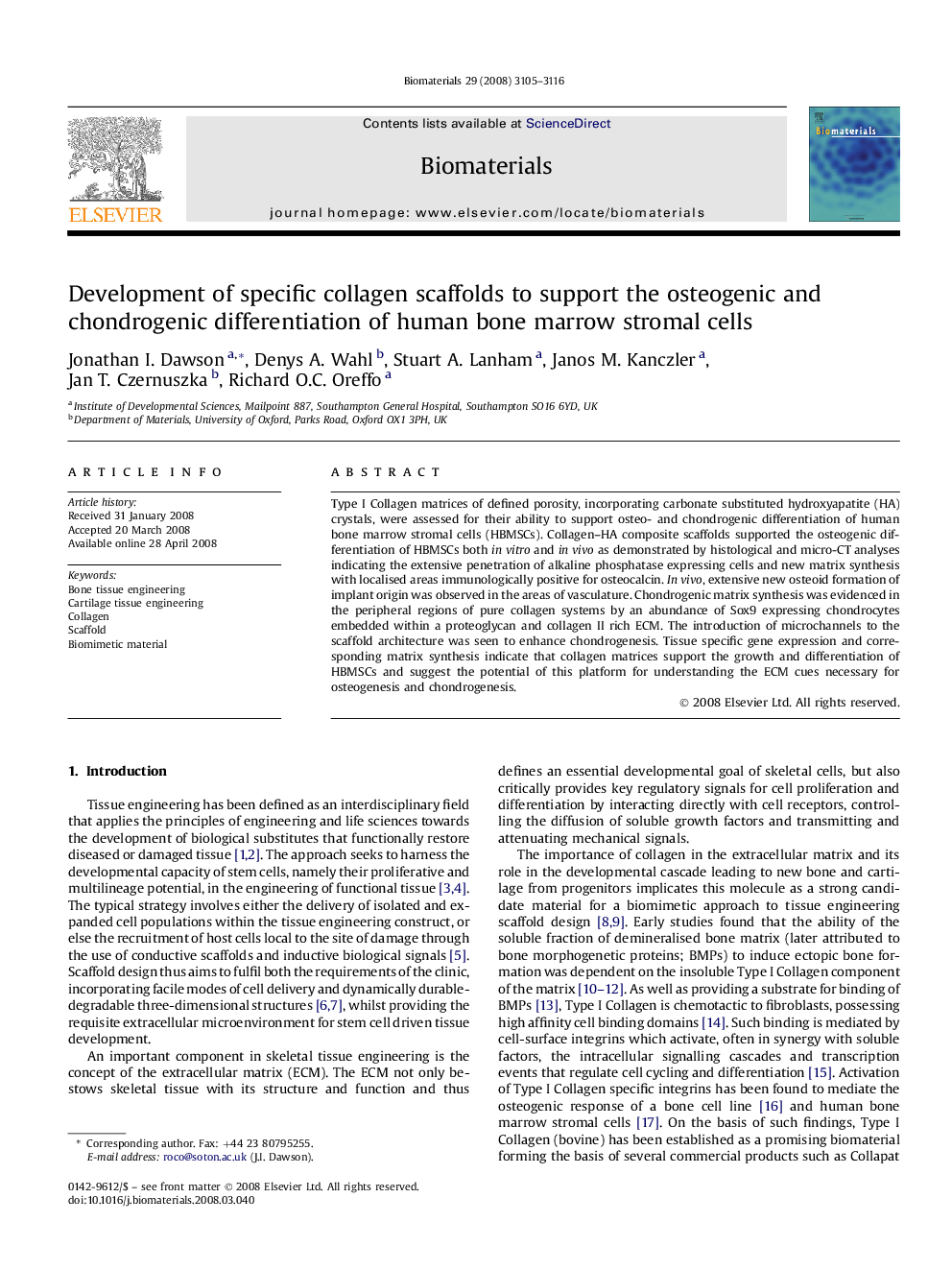| Article ID | Journal | Published Year | Pages | File Type |
|---|---|---|---|---|
| 9466 | Biomaterials | 2008 | 12 Pages |
Type I Collagen matrices of defined porosity, incorporating carbonate substituted hydroxyapatite (HA) crystals, were assessed for their ability to support osteo- and chondrogenic differentiation of human bone marrow stromal cells (HBMSCs). Collagen–HA composite scaffolds supported the osteogenic differentiation of HBMSCs both in vitro and in vivo as demonstrated by histological and micro-CT analyses indicating the extensive penetration of alkaline phosphatase expressing cells and new matrix synthesis with localised areas immunologically positive for osteocalcin. In vivo, extensive new osteoid formation of implant origin was observed in the areas of vasculature. Chondrogenic matrix synthesis was evidenced in the peripheral regions of pure collagen systems by an abundance of Sox9 expressing chondrocytes embedded within a proteoglycan and collagen II rich ECM. The introduction of microchannels to the scaffold architecture was seen to enhance chondrogenesis. Tissue specific gene expression and corresponding matrix synthesis indicate that collagen matrices support the growth and differentiation of HBMSCs and suggest the potential of this platform for understanding the ECM cues necessary for osteogenesis and chondrogenesis.
